| 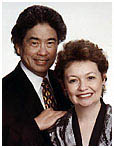 Effective
Teaching...
Effective
Teaching...
by Harry and Rosemary
Wong
December
2000
It's Not the
Students. It's the Teacher
Clara White of Brewton, Alabama, writes,
"After teaching 1st through 4th grade Title I, I moved to our local middle school. I spent my summer watching the video series, The Effective Teacher, and reading The First Days of School and structured my class accordingly.
After my second day of school, I walked out with my plans done and no papers to grade. During the second week of school I called each of my students' parents and many said that they had never received a call from a teacher much less a call about their child doing something good.
At the end of the second week I also told my students that each of them was unique and that I loved everyone one of them. Today many of my students say that they wish they could stay in my class all day. Everything is working unbelievably well, thanks to your techniques."
Then, there are a host of others who write,
"The students will not sit down; they speak out of turn; and they push each other."
They tell us they understand the importance of having a well-managed classroom, otherwise nothing can be taught. They insist that they are managing with procedures. But, they are just not getting the classroom results they want.
We are most appreciative of the many kind e-mail letters that are sent to us. We regret that we cannot give each of you a specific prescription for instant relief, because we do not know your classroom environment and culture. We know nothing about the teacher, the climate of the room, the expression on the face or in the voice of the teacher, or the organization of the classroom. But we have some suggestions to make.
Unfortunately, some of the pleas for help are clouded by cues of low expectation. We understand your frustration, but the problem is not inner city, poverty, minority, the administration, and negative veteran teachers. The research of William Sanders at the University of Tennessee states that
The single greatest effect on student achievement is not race, not poverty - it is the effectiveness of the teacher.
So, why are some teachers succeeding and others are still struggling to succeed? It's not the students; it's the teacher.
It's All in How You Teach the Procedure
The problem, at least in one circumstance, may be found in what one frustrated teacher said, "I tell them. I tell them over and over again and they just won't do it."
Telling a student what to do is not sufficient. All procedures must be practiced. Do you recall the old adage, how do you get to Carnegie Hall? Practice, practice, practice. So, telling a student over and over again won't work. Ask any coach or music teacher what they do. They each run the plays and sing the songs, over and over again. And after the game or concert, they go right back and practice and practice some more.
Some coaches and music teachers are able to have teams that play better and choruses that sing better than others. Some coaches and teachers are even able to take average players and singers and produce winning teams and choirs. Why the difference?
The same variation can be found with teachers. Some teachers have beautifully managed classrooms because they know how to teach procedures. It should come as no surprise that they also get better results in the instructional delivery of the academic content. It's all in how you teach something.
The three-step framework for teaching a procedure was described in our September column. (To access any of our past columns, click on "Gazette Back Issues" at the bottom of the left margin of this column.)
Getting students to learn and practice a new classroom procedure is a complex process. We have broken down the three-step framework into smaller parts so you can get an idea of how effective teachers teach procedures.
Model
Explain and model the procedure for the class. Perhaps, have several students role play the procedure. We know of a teacher who has created a skit for selected procedures. The students need to see what the procedure looks like or sounds like. Talk out loud while demonstrating and modeling the steps of the procedure. Never assume that your students know what you want them to do or can figure it out on their own.
Observe
As the students practice the procedure, observe them in action. This is how you determine if they can do what you want them to learn. Do not ask questions. Some students to avoid embarrassment will not respond to such questions as, "Is there anyone who does not know what to do?" or "Are there any questions?" These questions ask for information that does not exist in their frame of reference. Don't ask questions; just correct the action.
Coach
As you observe, verbally coach and physically demonstrate to those students who look unsure of what to do or who are not following directions. Coach with prompts and encouragement. Avoid showing frustration that some students cannot learn a procedure on the first try. Some students will need more coaching than others. Effective teachers have the patience and understanding to teach and reteach.
Many at-risk students have a home life that is confrontational. They are yelled at, so they bring this behavior to school. Rather than return the confrontation, patience and diligence will reward you with a classroom that operates smoothly.
Acknowledge
Encourage the student by praising an action or deed, rather than praising the student in a broad generic way. Tell the student specifically what he or she did well. "Kenny, you spelled all of your words correctly on the spelling test," rather than "Kenny, good job on your spelling test." For further reference on this very effective technique, read what Barbara Coloroso says about "Praise the Deed, Encourage the Student" on page 183 of The First Days of School.
Practice, Practice, Practice
Students need a great deal of practice to be able to use a skill accurately and automatically. There will be students who have problems with following directions, organizing, sequencing, listening, and focusing. For these students, it is essential to practice, as practice makes perfect!
Reinforcement
If all teachers in a school work together to use the same procedures, students will be able to see and reinforce the procedures throughout each day. The most effective schools have a culture that fosters common practices and values so students can see what other students are doing. (Refer to our October column and examples of staffs that work together as a family, creating a sense of consistency.)
Procedure for the Movement of Paper
Now, let's put into practice what has been said with one example.
The movement of paper is a common procedure in all levels of classrooms. One researcher reported watching a high school teacher ask his class to exchange papers. It took the class 20 minutes to exchange papers, whereas some teachers can collect papers in under 15 seconds.
Students should pass their papers
across the rows, not up the rows.
If your students are sitting in columns and rows, it is more effective to have them pass their papers across the rows to the side of the room rather than up the row to the front of the room.
Here are the problems with passing papers up to the front of the room:
- If papers are passed up the row, you cannot see what is happening behind each student's back as you stand at the front of the room waiting for the papers.
- Some students tap, poke, shove, and hit the back of the student in front to signify that the papers are coming up the row. Others wave the papers in the face of the student in front. No matter what is done, the student in front is irritated, words are spoken, and the disturbance in the class increases.
- When papers are passed from hand to hand, some papers may fall to the floor.
- There are frequently more students up a row than across a row.
- Thus, passing papers up a row takes longer to accomplish and is frequently accompanied by student agitation.
There are advantages to passing papers across the rows to the side of the room. The procedure for the movement of paper is as follows:
Step 1. Have the students place their papers on the desk next to theirs, starting with the student at one end of the row.
Step 2. The next student is to add his or her paper to the stack and place the papers on the next desk. Do not have the students pass the papers from hand to hand. This will eliminate flicking of papers as papers are passed.
Step 3. As the students pass the papers from desk to desk, monitor the procedure, making adjustments and corrections when necessary and praising when appropriate.
Step 4. Walk to the side of the room and look across all the rows to monitor the procedure. This tactic allows you to see across the rows, whereas you cannot see behind the backs of students when you stand in front of the room and they are passing papers forward.
Step 5. Pick up the papers, or ask a student to pick up all the papers. If the students are sitting at tables instead of chairs in a row
a. have the students place their paper at the head of the table (point to the designated spot), or
b. have students or an aide pick up the papers, or do so yourself.
It is not a good procedure to have the students place their papers in a basket on the teacher's desk. This procedure involves too much movement, too much of a mess left behind, and no accounting of who really did, indeed, turn in their papers.
Whatever procedure you choose to use for collecting papers, rehearse the procedure before the first time you collect papers.
Scripting the Procedure
For the sake of illustration, let's assume that the students are sitting in rows. You may want to verbalize the instructions for the procedure as follows:
"Class, the procedure for turning in papers is that we will pass the papers across the rows. Please wait until I finish explaining each step and then I will give you a signal to do it.
"We will start with everyone in the first row (stand at the front of this row). When I give you the signal, place your paper on the table (or desk) to your right. If you are at the next table, do not reach for the paper. (As you say this, move to the side of the room to observe.) All right (the signal), the people in this first row please place your paper on the table to your right."
(As you observe the procedure, acknowledge and make appropriate comments such as, "Do not touch the paper." "Just put it on the desk." "Correctly done." "Thank you.")
"Everyone in the next row please put your paper on or under (your choice) the papers on your desk. Now, let's repeat the procedure with the next row. Thank you."
"That's it Sandra. Just put your paper on the pile (coaching)."
"The next row, please. Well done! You correctly placed the papers on the next desk," or some other specific praise.
(When the papers arrive at the tables in the last row, ask the last student to walk up the row and pick up all the papers.) "Eric, would you please pick up all the papers. Thank you."
After two or three times (the practice), you won't even have to tell Eric what to do. He, and the rest of the class, will all know the procedure for turning in papers (the reinforcement).
This entire sequence can be seen on tape #4 in the video series, The Effective Teacher.
The Fun Comes After Perfecting a Skill
Thoreau said, "What we do best or most perfectly is what we have most thoroughly learned by the longest practice." Effective teachers practice and perfect the skills of teaching procedures because they know that these are the same skills used to teach the academic lessons.
Because effective teachers understand this concept, they are able to teach students the valuable skill that doing things in life correctly requires practice. Learning comes from persistence, practice, and dedicated hard work.
There are educators who believe that learning should be fun. These are typically the same educators whose classrooms are a mass of confusion with little time spent of learning. This is a classroom that is no fun for the teacher or the students.
There are other educators who believe that learning can be fun provided the classroom is organized for learning. These classrooms hum with energy and excitement. This is a classroom that has fun at the appropriate times. The teacher is happy and the students are happy and learning. The fun and excitement of learning comes after the perfecting of classroom procedures.
At this time of year there are holiday parties you may be attending. The parties that are organized and flow will be the ones where you have the most fun. The parties that are late in setting out the food, short on ice, or don't seem to have a purpose are the ones you'll be looking for any excuse to leave.
May all of your classrooms be organized and may all of your holiday parties be fun!
We look forward to the new year of sharing with you.
Happy Holidays.
 For a printable version of this article click
here.
For a printable version of this article click
here.
Harry & Rosemary Wong products: http://www.harrywong.com/product/
Email Harry Wong: harrywong@teachers.net
Gazette Articles by Harry & Rosemary Wong:
If you spot a link that appears to be out-of-date, please alert us at webmaster@teachers.net!
- A Grateful Goodbye After 15 Years (Jun 2015)
- Love, Marriage, and Babies, Oh My! (May 2015)
- Retention Rate Is 100 Percent (Apr 2015)
- Teacher Effectiveness and Human Capital (Mar 2015)
- Training Teachers to Be Effective (Feb 2015)
- Making Deals Is Ineffective (Dec 2014 / Jan 2015)
- Retrieving and Carrying Electronic Devices (Nov 2014)
- Sharing to Succeed (Oct 2014)
- How a University Prepares Its Students (Sep 2014)
- Effective Teaching (Aug 2014)
- Your Future Is in Your Hands (June/July 2014)
- The Classroom Management Book (May 2014)
- When Students Succeed; Teachers Succeed (April 2014)
- Teaching New Teachers How to Succeed (March 2014)
- Execute and Praise (February 2014)
- Shaping a Solid Foundation (Dec 2013 / Jan 2014)
- The Most Misunderstood Word (November 2013)
- How to Start Class Every Day (October 2013)
- Prevention: The Key to Solving Discipline Problems (September 2013)
- Planning, Planning, Planning (August 2013)
- Are You THE One? (June / July 2013)
- Practical Examples That Work (May 2013)
- A Disability Is Not a Handicap (Apr 2013)
- Totally Inexcusable (Mar 2013)
- Be Proud of Public Education (Feb 2013)
- Structure Will Motivate Students (Dec 2012 / Jan2013)
- Orchestrating the Classroom (Nov 2012)
- The Lasting Impact of Instructional Coaching (Oct 2012)
- Learning, Laughing, and Leaving a Legacy (Sep 2012)
- Twenty-two, First Year, and Legit (Aug 2012)
- A Master Teacher of Teachers (June/July 2012)
- Where Going to School Means Success (May 2012)
- A Nationally Celebrated High School (Apr 2012)
- The Highest Rated School in New York City, Part 2 (Mar 2012)
- The Highest Rated School in New York City, Part 1 (Feb 2012)
- The Importance of Culture (Dec 2011 / Jan 2012)
- You Can Teach Classroom Management (Nov 2011)
- Seamless, Transparent, and Consistent (Oct 2011)
- Coaching Teachers to Be Effective Instructors (Sep 2011)
- How a Principal Creates a Culture of Consistency (Aug 2011)
- Graduation Begins in Your Classroom (June/July 2011)
- The Inspiration of a Mother (May 2011)
- How to Be an Effective Leader (Apr 2011)
- Learning Objectives: The Heart of Every Lesson (Mar 2011)
- Even Shakespeare Had Structure (Feb 2011)
- Effectiveness Defined: It's Not a Mystery (Dec 2010 / Jan 2011)
- Surviving Without a Principal (Nov 2010)
- Achieving Greatness: Locke Elementary School, Part 2 (Oct 2010)
- Teaching Greatness: Locke Elementary School, Part 1 (Sep 2010)
- Effective from the Start (Aug 2010)
- Ten Year Summary of Articles, 2000 to 2010 (June/July 2010)
- The Success of a Culture of Consistency (May 2010)
- Training Teachers to Be Effective (Apr 2010)
- Learning to Teach, Teaching to Learn (Mar 2010)
- Turning Teaching Dreams into Reality (Feb 2010)
- Dreams and Wishes Can Come True (Dec 2009 / Jan 2010)
- Success in a State Controlled School (Nov 2009)
- Inner City Is Not An Excuse (Oct 2009)
- Exceeding All Expectations (Sep 2009)
- Teachers Are the Difference (Aug 2009)
- Nine Year Summary of Articles, 2000 to 2009 (Jun/Jul 2009)
- Teachers Are the Greatest Assets (May 2009)
- The Tools for Success (Apr 2009)
- Assessing for Student Learning (Mar 2009)
- To Be an Effective Teacher Simply Copy and Paste (Feb 2009)
- The Sounds of Students Learning and Performing (Dec 2008)
- A School That Achieves Greatness (Nov 2008)
- Boaz City Schools: Professional Learning Teams (Oct 2008)
- It Was Something Close to a Miracle (Sep 2008)
- A Computer Teacher Shows the Way (Aug 2008)
- Eight Year Summary of Articles, 2000 to 2008 (Jun/Jul 2008)
- An Amazing Kindergarten Teacher (May 2008)
- Schools That Beat the Academic Odds (Apr 2008)
- Academic Coaching Produces More Effective Teachers (Mar 2008)
- Coaches Are More Effective than Mentors (Feb 2008)
- Wrapping the Year with Rap! (Dec 2007/Jan 2008)
- The Floating Teacher (Nov 2007)
- Taking the Bite Out of Assessment—Using Scoring Guides (Oct 2007)
- Ten Timely Tools for Success on the First Days of School (Sep 2007)
- First Day of School Script - in Spanish, Too! (Aug 2007)
- Seven Year Summary of Articles, 2000 to 2007 (Jun 2007)
- Effective Teachers End the Year Successfully (May 2007)
- Training Gen Y Teachers for Maximum Effectiveness (Apr 2007)
- Classroom Management Applies to All Teachers (Mar 2007)
- Students Want a Sense of Direction (Feb 2007)
- Rubrics in Two College Classes (Dec 2006/Jan 2007)
- How to Write a Rubric (Nov 2006)
- Assessing Student Progress with a Rubric (Oct 2006)
- A 92 Percent Homework Turn-in Rate (Sep 2006)
- Effective Teachers Are Proactive (Aug 2006)
- Five Year Summary of Articles (Jun 2006)
- Hitting the Bulls Eye as a Beginning Teacher (May 2006)
- They're Eager to Do the Assignments (Apr 2006)
- The Success of Special Ed Teachers (Mar 2006)
- What Teachers Have Accomplished (Feb 2006)
- Fifty Years Ago, The Legacy (Dec 2005/Jan 2006)
- The Emergency Teacher (Nov 2005)
- Classroom Management Is Not Discipline (Oct 2005)
- A Successful First Day Is No Secret (Sep 2005)
- The Most Important Factor (Aug 2005)
- Four Year Summary of Articles (Jul 2005)
- Improving Student Achievement Is Very Simple (Part 2) (Jun 2005)
- Improving Student Achievement Is Very Simple (Part 1) (May 2005)
- Never Cease to Learn (Apr 2005)
- His Classroom Is a Real Life Office (Mar 2005)
- The Power of Procedures (Feb 2005)
- The First Ten Days of School (Jan 2005)
- PowerPoint Procedures (Nov/Dec 2004)
- The Saints of Education (Oct 2004)
- How Procedures Saved a Teacher's Life (Sep 2004)
- How to Help Students with Their Assignments (Aug 2004)
- Three Year Summary of Articles (Jun/Jul 2004)
- His Students are All Certified (May 2004)
- What to Do When They Complain (Apr 2004)
- A Well-Oiled Learning Machine (Mar 2004)
- The Effective Teacher Adapts (Feb 2004)
- How to Start a Lesson Plan (Aug 2003)
- Applying for a Teaching Job in a Tight Market - Part 2 (Jun/Jul 2003)
- Applying for a Teaching Job in a Tight Market (May 2003)
- The Effective Substitute Teacher (Apr 2003)
- A First Day of School Script (Mar 2003)
- How to Retain New Teachers (Feb 2003)
- No Problem With Hurricane Lili (Dec 2002)
- A Class Size of 500 (Nov 2002)
- Effective Practices Apply to All Teachers (Oct 2002)
- Dispensing Materials in Fifteen Seconds (Sept 2002)
- How To Start School Successfully (Aug 2002)
- Teaching Procedures Is Teaching Expectations (June - July 2002)
- $50,000 to Replace Each Teacher (May 2002)
- Even Superintendents Do It (Apr 2002)
- Impossible, No Job Openings? (Mar 2002)
- A Stress Free Teacher (Feb 2002)
- A Most Effective School (Jan 2002)
- Van Gogh in Nine Hours (Dec 2001)
- The Effective Teacher Thinks (Nov 2001)
- How a Good University Can Help You (Sep 2001)
- How to Motivate Your Students (May 2001)
- How to Recognize Where You Want to Be (Apr 2001)
- What Successful New Teachers Are Taught (Mar 2001)
- A Journey of the Heart (Feb 2001)
- The Miracle of Teachers (Jan 2001)
- It's Not the Students. It's the Teacher. (Dec 2000)
- The First Five Minutes Are Critical (Nov 2000)
- How to Start a Class Effectively (Oct 2000)
- The Problem Is Not Discipline (Sep 2000)
- There Is Only One First Day of School (Aug 2000)
- Applying for Your First Job (Jul 2000)
- Your First Day (Jun 2000)
Browse through the latest posts from the Classroom Management
Chatboard...
|




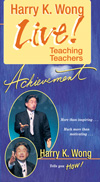
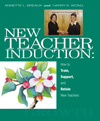
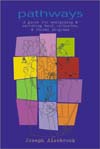


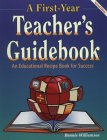
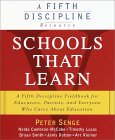

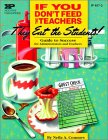
 Effective
Teaching...
Effective
Teaching...